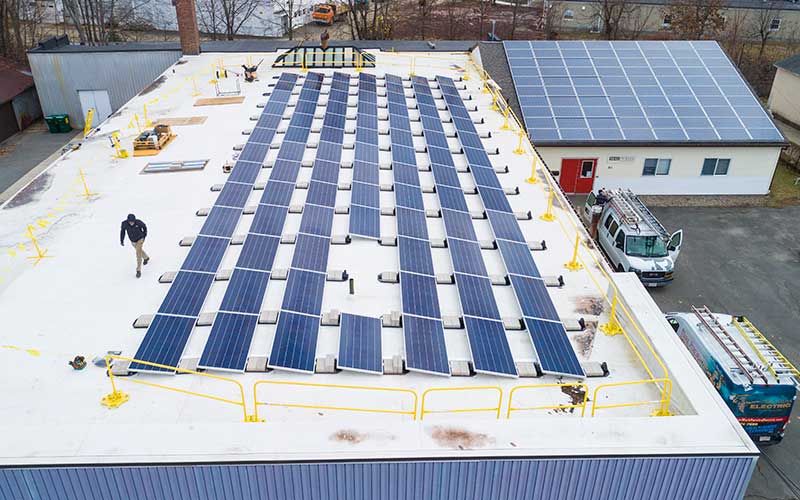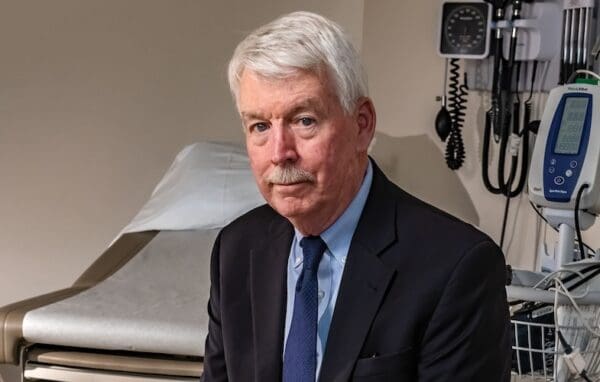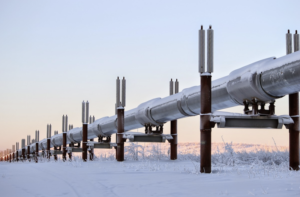
Landmark bills passed by Congress last year could accelerate the transition to a clean energy future. Now, we need to step up our advocacy to ensure those investments end the reign of fossil fuels. Photo: EcoPhotography
This Earth Day, the U.S. Congress has finally given us a climate milestone to celebrate. Late last year, after years of gridlock and inertia, Congress passed, and President Biden signed, landmark bills to curb carbon emissions, accelerate the national transition to a clean energy economy, and remedy failing infrastructure and historic environmental injustice. These once-in-a-generation investments present an extraordinary opportunity to make big, bold moves for the planet and our future.
Investments at this scale – the nominal price tag is $369 billion, but the ultimate spending tally will likely approach $1 trillion – also give life to climate action at the state and regional levels. They will provide resources to boost the ambitions of states with strong climate laws, amplify the impact of new state rules and policies, and ensure that disadvantaged communities benefit fully from the funding.
And there is no time to lose. Just last month, the United Nation’s Intergovernmental Panel on Climate Change warned that if we continue along our current path, the planet will rocket past 2.7 degrees Fahrenheit of warming by the early 2030s. That will result in severe climate disruption, conflict, drought, and hunger worldwide. As I write on this 83-degree mid-April day, I hardly need convincing.
A Promising Beginning
We now have the opportunity to alter that path, to act boldly, innovate broadly, and invest equitably. Several models suggest that the new funding will allow the U.S. to achieve emissions cuts of 40% by 2035 (compared to 2005 levels) rather than the 25% we had been on track to meet.
Such deeper cuts would be made possible by an array of provisions to accelerate the clean energy transition that we need to slow the climate crisis. These include $200 billion in incentives to ramp up solar, wind, energy storage, and efficiency on the grid; $60 billion worth of investments in clean energy technology manufacturing; and another $60 billion worth of investments in environmental justice. There are also provisions to boost climate-friendly agriculture, protect coastal communities against climate threats, and encourage the purchase of electric vehicles.
Just imagine what all that money could look like at the street level.
Smart, proactive state planning could create robust and extensive retrofit programs to encourage homeowners and businesses to upgrade heating systems, weatherize, and swap out inefficient appliances. That would help our climate and save families and businesses money on costly heating bills.
A comprehensive and far-reaching public awareness campaign could reach every community, not just the well-heeled ones, to enable homeowners and renters of all income levels to switch from dirty oil and gas furnaces and gas stoves to clean electric heat pumps and electric stoves. That would make homes and communities safer from toxic air pollution while cutting climate-damaging emissions from fossil fuels.
Cities and towns could expand and electrify public transit systems and build an extensive network of public charging stations, making owning and using an electric vehicle easier. Doing so would save families money on price-volatile gas while reducing toxic tailpipe pollution in our communities.
Sound regional planning and streamlined permitting could accelerate the buildout of offshore wind, solar farms, and electricity transmission lines while better protecting communities and iconic landscapes, waters, and living resources.
These Investments – and Their Benefits – Must Be Distributed Equitably
However, these potential benefits depend not just on how the money is spent but where. For too long, lower-income and communities of color have endured the effects of disinvestment and discriminatory policy choices, systems, and institutions. For decades, these communities have borne the burden of power plants, highways, and waste incinerators – all built very deliberately in their midst. As a result, they carry a disproportionate burden of pollution, health hazards, and climate change impacts.
The Biden administration’s Justice40 initiative promises to remedy this toxic legacy by committing at least 40% of new federal spending to projects that benefit these communities. A $27 billion “green bank” that includes funds directed to renewable energy projects for disadvantaged communities and an allocation of $177 million in technical assistance for underserved and overburdened communities to access federal funding are a good start. But these programs must be followed through on, and communities must have input and agency over how those monies are spent.
Potential for Mischief
But the massive spending hardly assures the much-touted benefits for climate and communities. To start, the funding cannot be fully deployed without significant improvements to how we develop and approve major clean energy and infrastructure projects.
And not all the spending and Biden policies are climate-positive. The legislative package on climate also included numerous measures to prop up the fossil fuel industry and delay the clean energy transition. Both before and immediately after his victory lap on climate spending, Biden threw the industry more lifelines by greenlighting new oil and gas drilling and export facilities that will lead to increased climate-damaging emissions – undermining the objectives of the new funding.
The Justice40 policy, while laudable and overdue, is largely unenforceable. It also turns on decisions by both federal and state elected officials and agencies that historically have shortchanged disadvantaged communities. These officials and agencies have wide latitude in directing how the new funds are spent. They may diminish the funding program’s impact by using the new resources to replace, rather than augment, current state clean energy commitments and levels of investment.
Finally, the benefits of massive climate spending could be overwhelmed by the even more massive infrastructure funding Congress has approved with few constraints. Ideally, that spending will be used to expand mass transit and other clean and community-friendly mobility projects. But decision-makers could also use it to resurrect bad road projects that cause more congestion and pollution, divide communities, and threaten natural resources.
So how can we ensure that these momentous investments do not get squandered?
Keeping Climate Progress on Track
The answer is advocacy.
Congress’s recent investments in clean energy and infrastructure could propel us to a clean energy future or further shackle us to the fossil fuel past. Their actions open a new front in the fight for our climate future.
For the most part, the outcome of that fight will get decided far from Washington, D.C. The most consequential energy decisions are made in statehouses, city and town halls, boardrooms, and federal and state courts. These are the venues where advocacy will determine whether we can end the reign of fossil fuels and renew the hope that future generations will have a livable climate. These are the same venues where CLF has always made a critical difference in holding public officials and the fossil fuel industry accountable.
We will need to increase our presence and change up our tactics in all of those venues to make sure that New England – with strong climate laws in five states, progressive regional leaders, a wealth of clean energy entrepreneurs, and a history leading this nation’s transformative transitions – uses these resources and complementary state policies to demonstrate to the nation and the world that we can end the reign of fossil fuels.
The fossil fuel industry – from major oil companies like ExxonMobil to your local gas utility – knows this is the battleground and is spending lavishly to stop our momentum and mislead the public. CLF, along with our supporters, allies, and community partners, must ramp up in kind.
This year’s Earth Day will be filled with much celebration, familiar speechmaking, and credit-taking as regards federal climate and infrastructure funding. But even as we celebrate the victory in hand, we must – as on that first long-ago first Earth Day – gird for the battle in front of us.



